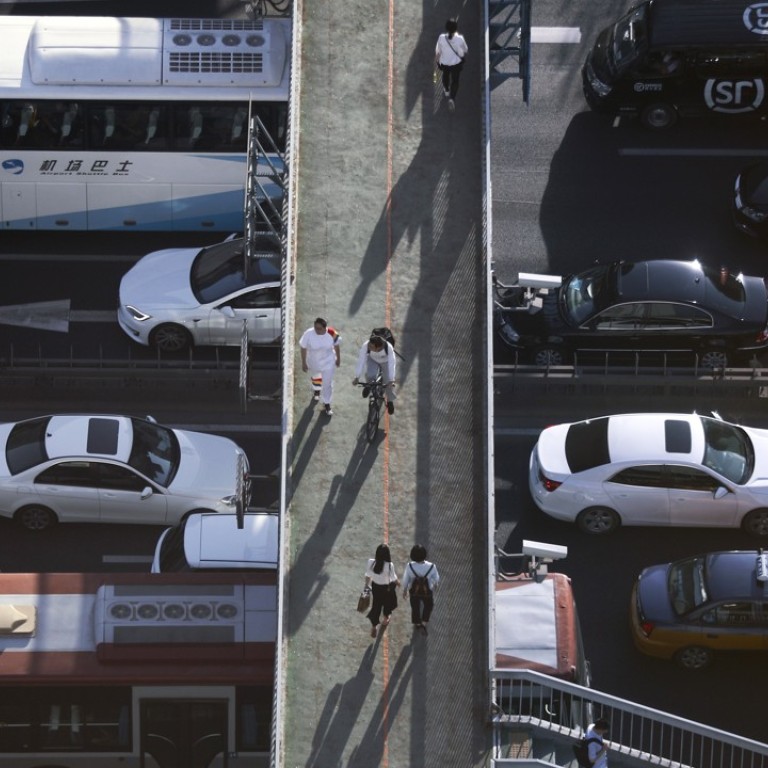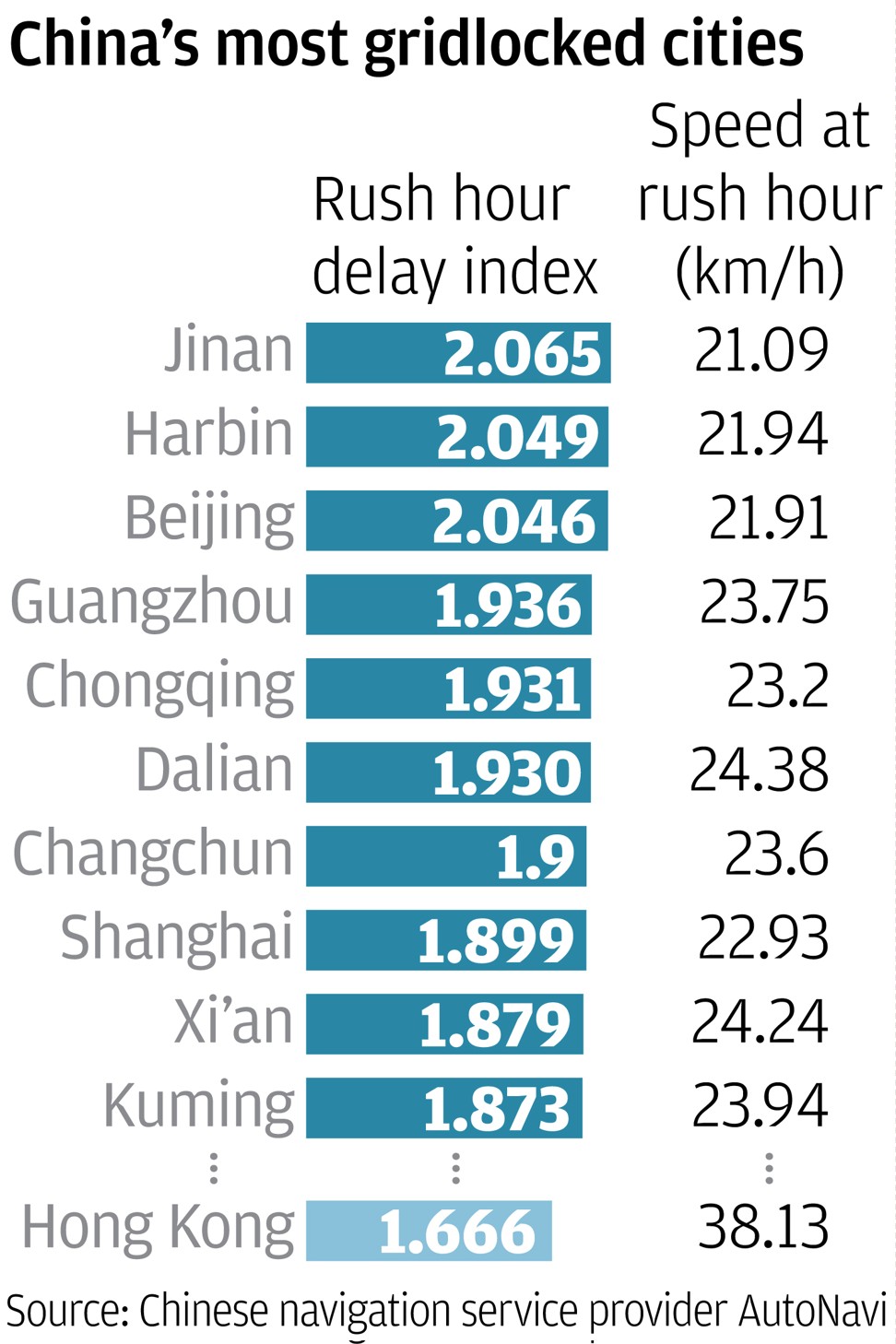
At 20km/h you are moving only slightly faster than a donkey in Jinan, China’s most gridlocked city
Traffic conditions improved in bigger cities in third quarter, says AutoNavi
The average speed during rush hour in Jinan, the capital of China’s eastern Shandong province, is slightly faster than that of a donkey.
Once described in Marco Polo’s 13th century travelogue as a city with rich trade in silk goods and spices, Jinan is now known for its traffic jams, the worst in all of China, according to a ranking of 100 cities by AutoNavi, the navigation service provider owned by Alibaba Group Holding. For the report, AutoNavi calculated and analysed data collected from devices installed on vehicles that can record their speed and location.
Traffic in Jinan is compounded by the large number of streets, roads and subways under construction. At slightly more than 20km/h, riding in peak-hour traffic is not much faster than a donkey-drawn cart, which is still used in the countryside today as a means of transporting goods. The average speed of the slow-moving and stubborn creature is 9mph, or 15km/h.
Sharing in the misery at No. 2 on the list is the northeastern city of Harbin, while Beijing was the third-most congested metropolis, according to AutoNavi’s findings. These three cities also reported a rush-hour delay index of more than 2.0, which means commutes during peak hours took twice as much time as they would during non-peak hours.
Hong Kong, which lies south of Guangdong province, stood at 51st in terms of congestion, with an average rush-hour speed of 38km/h, almost double the speed in Jinan, thanks to its advanced transport infrastructure and high proportion of motorways.
Rapid economic growth and a surge in car ownership has contributed to traffic congestion in China’s major cities, while many of its smaller towns are also gridlocked because their roads are not designed to support a large population of motorised vehicles. China has surpassed the US as the biggest market in the world for car sales – new deliveries of passenger vehicles reached 24.3 million units in 2016.
The worsening congestion has prompted cities such as Beijing to impose purchase and usage restrictions.
Nanjing, Chonqing and Shenyang as well as Changchun are highly likely to record a worsening traffic situation in the future, the findings suggest. All four cities are already reporting serious traffic jams.
According to AutoNavi, traffic in first and second-tier cities had improved generally, with Hangzhou, Tianjin and Shenzhen most likely to ease congestion in the future.
However, traffic in third-tier cities, especially those in Guangdong province, will worsen. Cities such as Zhuhai, Foshan, Huizhou and Zhongshan, which are part of China’s ambitious “Greater Bay Area” plan, are expected to report a decline in traffic conditions.
Alibaba Group owns the South China Morning Post.


